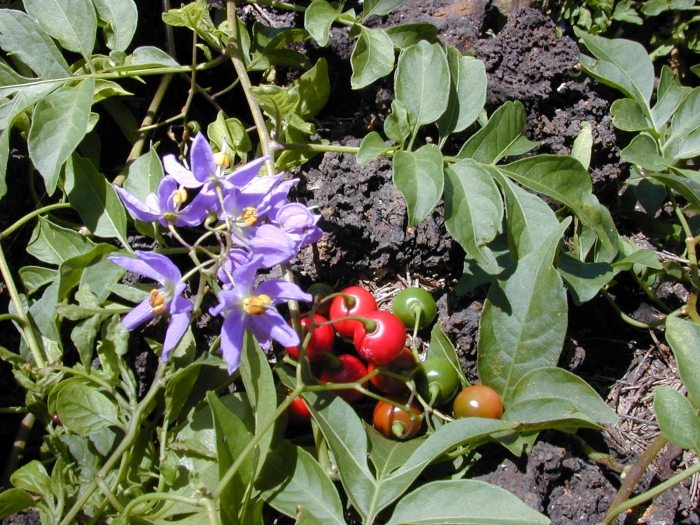Brazilian Nightshade
(Solanum seaforthianum)
Brazilian Nightshade (Solanum seaforthianum)
/
/

Forest & Kim Starr
CC BY 3.0
Image By:
Forest & Kim Starr
Recorded By:
Copyright:
CC BY 3.0
Copyright Notice:
Photo by: Forest & Kim Starr | License Type: CC BY 3.0 | License URL: https://creativecommons.org/licenses/by/3.0 | Uploader: BotMultichill | Publisher: Wikimedia Commons | Title: Starr_020323-0062_Solanum_seaforthianum.jpg | Notes: Uploaded own work with UploadWizard |


















































Estimated Native Range
Summary
Solanum seaforthianum, commonly known as Brazilian nightshade, is an evergreen vine native to tropical rainforests and forest edges in South America. It belongs to the Solanaceae family, which includes important crops like tomatoes and potatoes. This vigorous climber can reach up to 6 meters (20 feet) in height, supporting itself with twining stems. The Brazilian nightshade produces clusters of four to seven lanceolate leaves and is adorned with star-shaped purple flowers in mid to late summer. These blossoms give way to attractive scarlet, marble-sized berries, which are mildly toxic and should not be consumed.
The plant is celebrated for its ornamental value, particularly the showy purple inflorescences and bright berries that add a splash of color to garden settings. It is suitable for trellises, arbors, and fences, providing a lush, tropical look. Brazilian nightshade thrives in full sun to part shade and requires medium amounts of water with well-draining soil. While it is heat resistant, it is not frost-tolerant and should be protected from cold temperatures. Gardeners should be cautious, as Solanum seaforthianum can become invasive outside its native range, potentially outcompeting local flora.CC BY-SA 4.0
The plant is celebrated for its ornamental value, particularly the showy purple inflorescences and bright berries that add a splash of color to garden settings. It is suitable for trellises, arbors, and fences, providing a lush, tropical look. Brazilian nightshade thrives in full sun to part shade and requires medium amounts of water with well-draining soil. While it is heat resistant, it is not frost-tolerant and should be protected from cold temperatures. Gardeners should be cautious, as Solanum seaforthianum can become invasive outside its native range, potentially outcompeting local flora.CC BY-SA 4.0
Plant Description
- Plant Type: Vine
- Height: 15-20 feet
- Width: 3-6 feet
- Growth Rate: Rapid
- Flower Color: Blue, Pink, Purple
- Flowering Season: Summer
- Leaf Retention: Evergreen
Growth Requirements
- Sun: Full Sun, Part Shade
- Water: Medium
- Drainage: Medium
Common Uses
Bee Garden, Bird Garden, Butterfly Garden, Deer Resistant, Drought Tolerant, Fragrant, Hummingbird Garden, Rabbit Resistant, Showy Flowers
Natural Habitat
Native to tropical rainforests and forest edges in South America
Other Names
Common Names: Climbing Nightshade, Deadly Nightshade, Potato-Creeper, St. Vincent-Lilac, Black Nightshade, Italian-Jasmine, Aartappelranker, Brasilianischer Nachtschatten, Guindilla, Trepadeira-Doce-Amarga
Scientific Names: , Solanum seaforthianum, Solanum seaforthianum var. disjunctum, Solanum prunifolium, Solanum tenuifolium, Solanum cyrrhosum, Solanum triphyllum, Solanum venustum, Solanum kerrii, Solanum salignum
GBIF Accepted Name: Solanum seaforthianum Andrews